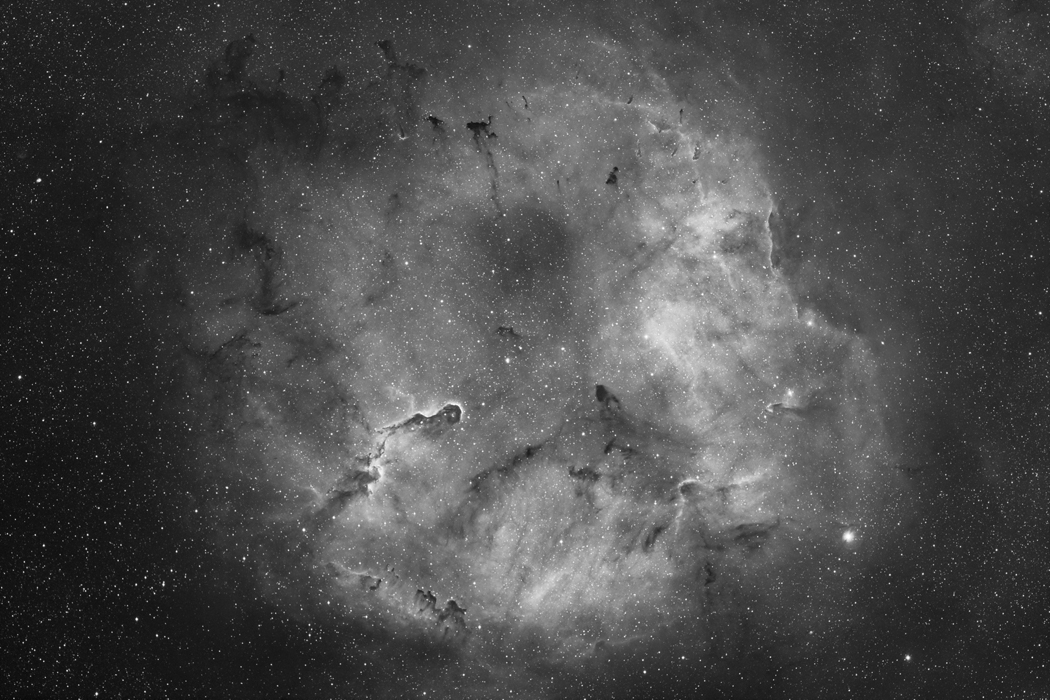IC 1396 in Hydrogen Alpha
Characteristics:
Magnitude: Unknown.
Size: Roughly 3 degrees across.
Distance: 2,450 light years
RA: 21h 39m 31s (J2000)
Dec: 57degrees 29' 59" (J2000)
Description:
IC1396 is a large emission nebula in Cepheus. The above image was
obtained using a filter than only passes light emitted from singly
ionized hydrogen (HII), which is excited by UV irradiation from the
central
star HD206267. Radiation from this star has cleared out a central
portion from the nebula and has also blown away gas and dust radially,
resulting in a variety of dark globules that roughly point towards the
center. These are called "cometary globules"
in recognition of their overall shape, which consists of a head
followed by a tail of dust that is being blown backwards by HD206267's
solar wind. The most conspicuous globule is 1396A, also known as
the "Elephant Trunk,"
which contains a subtle reflection nebula vdb142.
Other cometary globules can be appreciated in the 60% size
version of this image. Although
the dark gas and
dust are opaque to visible light, infrared light passes through this
region easily, permitting a view of the inner workings of the Elephant
Trunk. Please click here
for an infrared view of this area taken through the Space InfraRed
Telescope Facility (SIRTF), now known
as the Spitzer Space Telescope. Please be sure to check out
the larger sized images for greater detail. Rob Gendler has an excellent
description of IC1396 on his website.
Photographic
Details:
Date Posted: June 9, 2007
Scope: Takahashi
FSQ106 at f5 on the G11 Losmandy
Mount.
Autoguider: SBIG ST-402 with
e-finder.
Camera: STL11K -20C.
Filters: Baader 7 nm
Ha filter.
Exposures: Ha, 10
x 20' (unbinned, image scale
3.5"/pixel). Total
exposure 3.3 hours.
Post-processing:
Calibrated, astrometric aligned, and Sigma
Clip combined
in Maxim, followed
by DDP
in ImagesPlus (IP). Further processing in Photoshop CS (16
bit format).
Please
note: Graphics on this website
may not be reproduced without author permission.
Back to Hydrogen Alpha
Home
